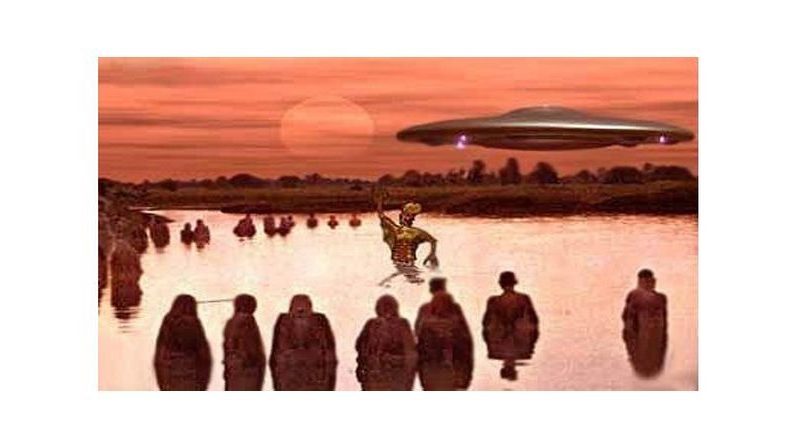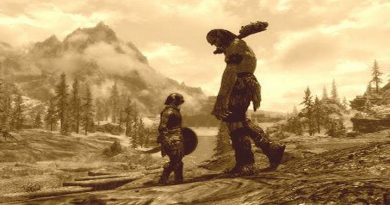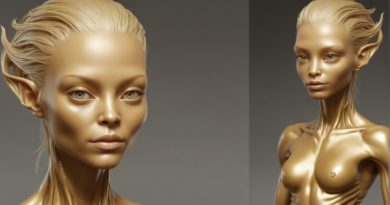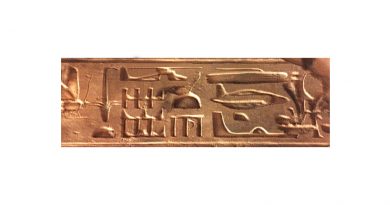The tribe of the Dogon and extraterrestrials
Mysterious beings descended from the stars
The Dogon are an African tribe living in Mali on the banks of the Niger of about 250,000 people live in straw and mud huts; and their past did not know anything, except that appeared in the area in the thirteenth century AD, they would be the classic wild tribe living hunting.
In 1931 two French anthropologists have lived for thirty years’ with the Dogon and in 1950 published their studies revealing that these people knew about the rings of Saturn, the four moons of Jupiter and Sirius is actually a double star and draw the ‘orbit in the same way our astronomers.
The two French anthropologists, Marcel Griaule and Germaine Dieterlen, received this information only after a decade of work among the Dogon, after having established a climate of trust and affection towards them. Even then, anthropologists had to reconstruct the information with elements from various sources, because each of the great initiates possessed only a part of this complex system of knowledge.
Among these oral stories that have been passed down through the generations of time, it tells of a conversation between Griaule with Ogotemmeli, one of the elders of the Dogon in which he was told the legend of Nommos, a nation of amphibians extraterrestrial beings from outer space. The story was then published in 1948.
Their descriptions are very similar to those attributed to ancient Egyptian legends of gods and goddesses as well as those Sumerian.
Robert Temple, author of “The Sirius Mystery”, accidentally comes across some research describing this people, reporting part of their beliefs; he was thus able to read that the Dogon often refer to beings who came from the sky, more precisely from the star Sirius, that these same beings, called Nommo, had the body of fish (the mystery of Oannes is re-proposed), and that they brought the first rudiments of civilization on earth about three thousand years ago. Returning to the alleged knowledge of Sirius, there is the description of a star practically invisible to the naked eye and very difficult to observe even with the help of a telescope, so much so that there were no photographs of it before 1970.
The Dogon claim that such knowledge (revealed some French anthropologists in the 1930s and 1940s) had been taught by their visitors from another star system. The star they describe is known to astronomers as Sirius B, while the Dogon Po Tolo.
Its existence was suspected for the first time by Western astronomers in 1844, when they were noticed some irregularities in the motion of the star Sirius, the brilliant “Dog Star” in the constellation Canis Major. To explain these anomalous, it was assumed that Sirius was influenced by the gravitational pull of an invisible star, and in 1862, after many observations, he finally revealed the presence of a faint companion.
It seemed, however, far too small to have an appreciable influence on the motion of Sirius which is twice the size of our Sun and 20 times brighter. Today we know that Sirius B is a white dwarf that, however small and pale (white dwarfs belong to the smallest class of stars), is extremely dense, with sufficient mass to exert a gravitational pull on Sirius A.
The name by which the Dogon call Sirius B is composed of the word “tolo” ( “star”) and “Po” , the smallest seed known to them (that of Digitaria exilis, a variety of dogwood). With this name they describe the smallness of the star and also assert that it is (as in it the earth is replaced by an immensely heavy metal called “sagala”) so heavy that the color of the star is white.
The Dogon therefore attribute to Sirio B (who is, let us remember, absolutely invisible to the naked eye) the three fundamental characteristics of a white dwarf: smallness, heaviness and whiteness. They also argue that the orbit of the star is elliptical, with Sirius A placed at a focus but there is also a third star of the Sirius system, called Emme Ya (“Female Sorghum”), around which an orbit single satellite. To date, Emme Ya has not yet been discovered.
For the Dogon, Sirius B was the first star created by God and is the fulcrum of the Universe. From it all matter and all souls have developed through a complex spiral motion that the Dogon symbolize in their woven baskets.
All souls, whatever their destination, first gravitated from Po Tolo to Emme Ya.
They have four calendars, for the Sun, for the Moon, for Sirius, for Venus, and for a long time they have known that the planets orbit around the Sun. The Nommos were also called Masters of the water, Ammonitoris, Instructors. They arrived on Earth in some area northwest of the current Dogon region.
When their spaceship landed – after a screw descent that made a lot of noise and air movement – it skidded on the ground opening a furrow in the ground (perhaps referring to the nozzles of a rocket). At that time, a new star (perhaps the mother ship) appeared in the sky.
After landing, a thing with four legs appeared that pulled the ship towards a basin that was filled with water so that the ship could float.
According to the Dogon depictions, the Nommos looked more like fish than men, and were forced to live in water. They were redeemers and spiritual guardians “The Nommo is told he divided his body among men to feed them, remember something?
He gave all his life principles to human beings. “The Nommo was crucified and resources; He will return again on earth, this time in human form. Then summarize the amphibious shape and command the waters of the world. If the stories of the Dogon remind momentary events such as the landing of beings on this earth from another star system, one would expect to find similar descriptions elsewhere.
In a Babylonian tale on Oanni, we find the description of amphibious beings who came to this earth for the good of humanity.
With their vehicle egg-shaped, would be moored in the Red Sea. The following descriptions are taken from a History of Mesopotamia, written in the third century BC by Berossus, Babylonian priest whose work survives only in fragments reported by Greek historians. “The whole body was like that of a fish; and he had another head in a fish head, and feet like the feet of a man were added to the tail of a fish. His voice and his language were articulate and human. During the day, this being conversed with men, but not ingested any food at that season; and he communicated their knowledge of letters and sciences and every kind of art.
He taught them to construct houses, to found temples, to formulate laws, and explained to them the principles of geometry.
In short he instructed them in every material suitable to sweeten the ways and to humanize the human species. When the sun was setting, being used to dive back, and stayed all night in the bottom of the sea, it was amphibious. “Another story about Oanni was reported by Photius (ca. 820-892), patriarch of Constantinople.
In his Myriobiblon says historian Elladio “tells the story of a man named Oe, who came out of the Red Sea and had a body like that of a fish, while the head and limbs were a man.” Oe taught astronomy and letters. According to some accounts, he came out of an egg (hence its name), but it really was a man who looked like a fish because the dress had scales.
Is it possible that the Nommo of the Dogon and the Babylonian Oannes are different representations of the same event? The Dogon themselves insist that their people did not always live in the region they occupy now, and evidence suggests that they are descendants of the Berbers, who began migrating south from Libya in the 1st-2nd century AD. Then, joining in marriage with local blacks, they settled permanently in Mali around the 11th century.
In this case, however, it is strange that the Dogon retained the memory of the star Sirius B, while the Egyptians, certainly in contact with Sirius A, helped them to predict the flood of the Nile.
On that basis, it would seem likely that the Dogon and Babylonian history relate similar events, but separated (Robert KG Temple, The Sirius Mystery, trans. The Sirius Mystery, SugarCo Ed., Milan 1976)THE DOGON AND THE EUROPEAN ERUDITES Carl Sagan, an astronomer at the Cornell University author of cosmic Contact, and co-author of Intelligent Life in the Universe, in the light of billions of stars that populate the universe, the great number of planets in orbit around them, and the incredible age of ‘ Universe, said to be virtually a statistical certainty that intelligent life has evolved several times and many civilizations are much older and more advanced than ours.
This would seem to corroborate the possibility that the source of information comes from the Dogon, as they assert, ancient astronauts.
If you liked the article, share it. Cesare Valocchia




